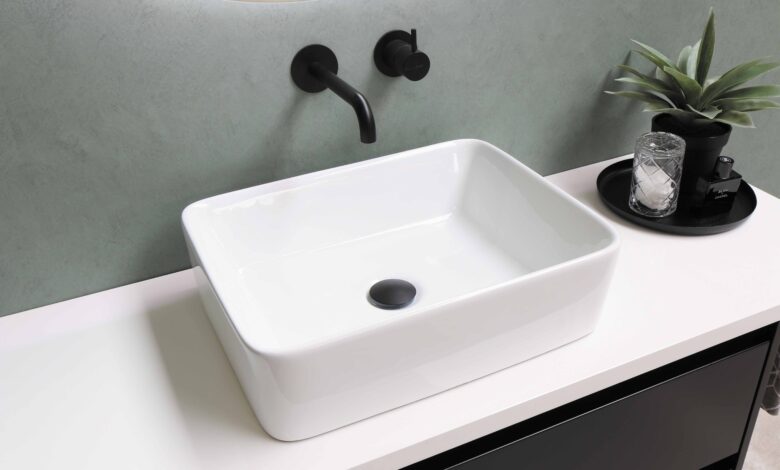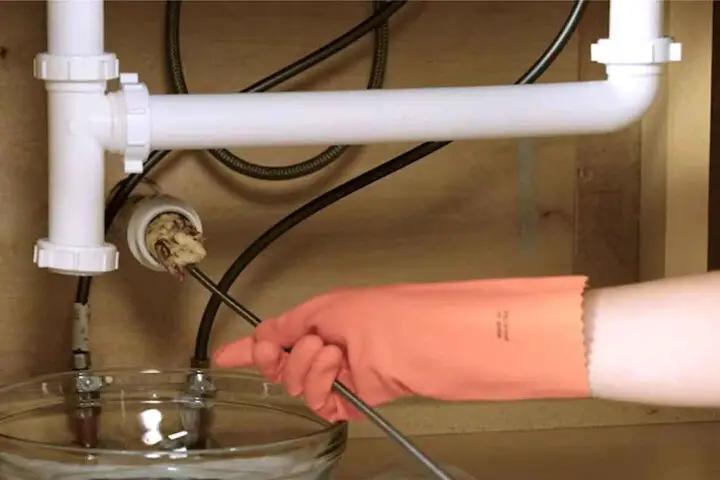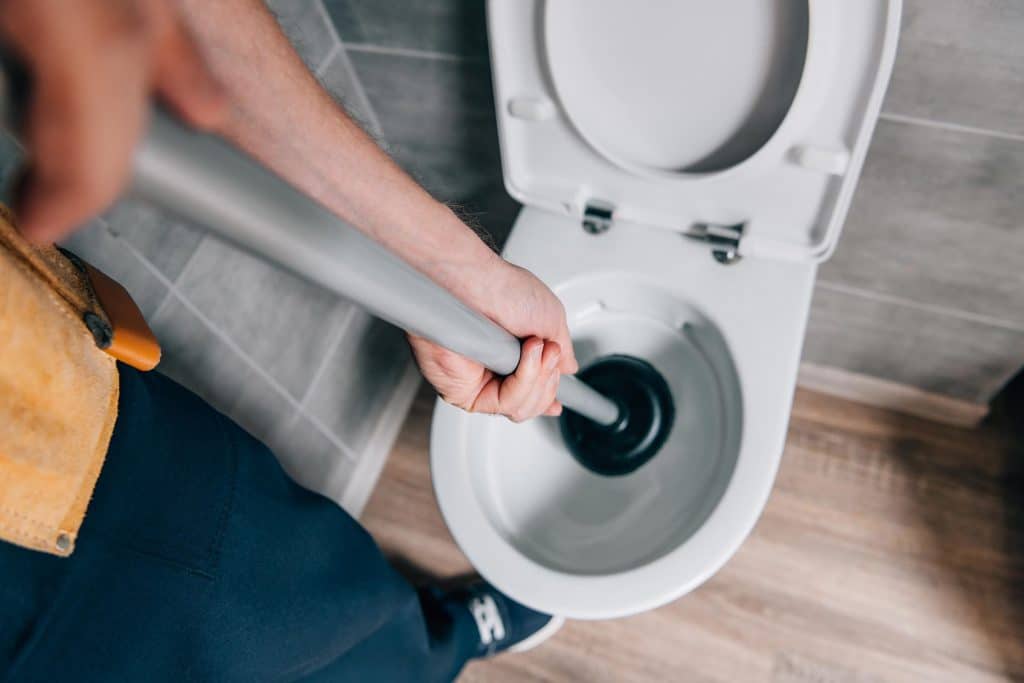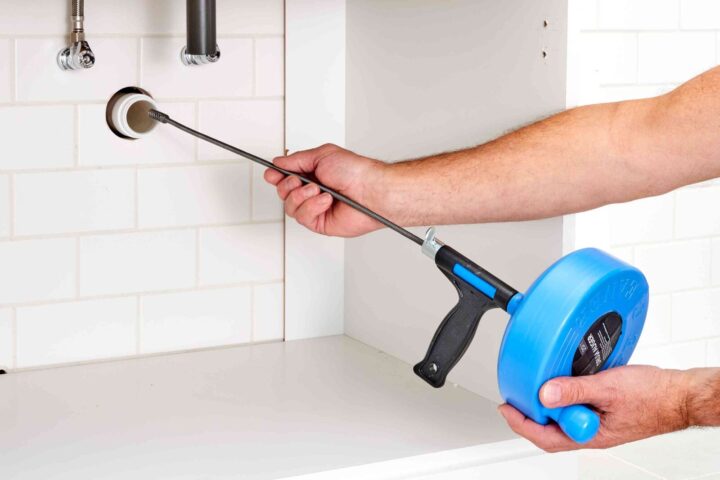How to Unclog a Pipe

Few things are as annoying as a clogged pipe – they smell, and the water backs up into your sink or toilet. If you want to deal with this nasty problem as efficiently as possible, then the best option is skipping the hassle and contacting a professional plumber who utilizes professional sewer camera equipment, from a supplier such as USABorescopes.
However, if you believe that the issue isn’t severe enough to warrant hiring a professional, there are a few things you can do to solve the problem yourself.
Homebrew Solution

Did you know that you can easily make an unclogging mixture of your own – using nothing but generic household supplies? You only need:
- Water
- Baking Soda
- Vinegar
And you’ll have an eco-friendly, effective solution for unclogging pipes. The combo of hot water and baking soda quickly loosens most of the buildup in your pipes, and the way it chemically reacts with vinegar pushes all the sludge further down your drain.
All you need to do is to boil a pot of water and pour it down the drain. Once that’s done, do the same with half of a cup of baking soda – just pour it and wait around five minutes.
After that, pour a solution of one part boiling water and one part vinegar. Let that slide down the drain for 10 minutes.
Finally, the last part is pouring another cup of boiling water. That will flush down any remaining sticky residue that the previous steps have loosened up by now.
Use Liquid Cleaners
Of course, you don’t necessarily have to make your own pipe unclogging solution. You can find a liquid cleaner in pretty much any convenience store. And don’t trouble yourself with expensive name brands – at its core, almost every pipe cleaning solution is the same, so feel free to save money and get the store brand.
Naturally, these are quicker and easier to use because you don’t have to fiddle around with any mixtures and multiple steps. However, there are downsides – these solutions are extremely potent and may damage worn-down or older pipes.
The procedure is pretty similar to using a homemade solution – follow the instructions on the bottle to see how much you need to pour, though it’s typically the entire bottle. Then, wait as long as necessary, and rinse out the pipes with water (preferably hot) afterward.
Find A Powder Solution
Apart from liquid solutions, there are also different powder-based options. Plenty of folks prefer the latter – while they’re somewhat less effective, they’re also less corrosive on metal pipes. The majority of those powder solutions use sodium hydroxide – a chemical that quickly and effectively unclogs most drains.
Most of these products are easily applied – you run hot water through your pipes for a couple of minutes, turn off the tap, and then pour your powder of choice down the drain. Depending on the length of the drain and the severity of your clogging issue, you could use around 2 cups or more.
Once you’ve applied the powder, let it rest for 2-5 minutes, and then rinse out the remains with hot water. However, be careful with chemical substances, both in liquid and powder form. They’re capable of dissolving filth, dirt, and other particles that are causing the blockage – which means they might cause injury if they come into direct contact with your skin.
With that in mind, we recommend using rubber gloves while applying any of these products.
Get A Plunger

At the end of the day, your clogging issue might not require the use of any chemicals. Depending on how big your problem is, you may be able to solve it with a plunger. It’s the universal tool for clearing all kinds of pipes – from your sink to the bathtub or toilet. The rubber cup at the bottom is great at providing suction which can dislodge clogged drain pipes.
To use it, you simply fill your sink or tub up with a couple of inches of standing water – if it’s not already there. As you push and pull the plunger, the standing water will provide additional pressure to the obstruction that’s blocking your pipes.
If necessary, you can seal off any connected drains with a plug or a rag before plunging – that way, there will be even more pressure. Once the clog seems to have cleared, use hot water to dispense with any remains.
Find A Drain Snake

Suppose that your plunger hasn’t done the job, but you still want to avoid using chemicals. In that case, a drain snake might prove to be a better tool for the job. It’s a flexible, lengthy piece of steel with a handle – and you can use it to dislodge even the hardiest buildup in your pipes.
The front of the snake has an “auger” part – it’s sharp and usually in a spiral shape. That’s the part you’ll be pushing down your pipes. It’s an inexpensive tool; you can find it in almost every hardware store.
But you can also rent one if you want – it’s not the sort of tool you’ll be using every day. To use it, you simply insert the front part into the drain, and then start twisting it around. The auger will catch on any particles or obstructions and start breaking them down.
Once you’ve managed to break up the blockage, you can remove the snake and finish the job by rinsing the pipes with hot water.
In conclusion, there are plenty of ways to unclog a drain pipe, and each of them has its own set of positives and negatives. In the case that you don’t want to use harsh chemicals, you can try a plunger, a drain snake, or a homemade solution. If you want to use a cleaner, you can purchase a liquid or powder solution.
But if you want to be sure that the job will get done quickly and efficiently, the best thing you can do is to contact a plumber with a sewer camera.

